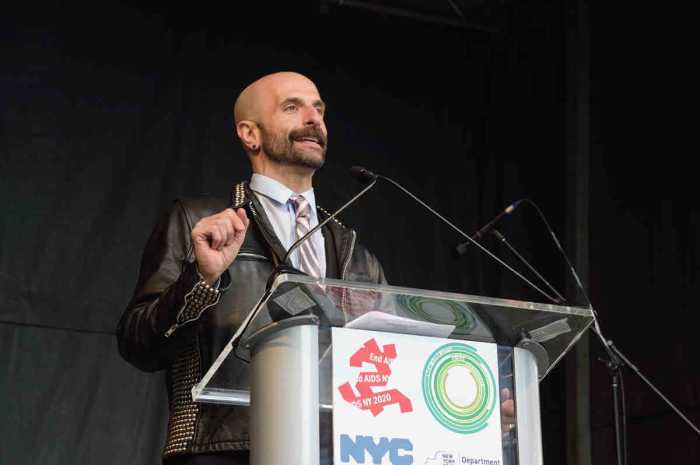Three years ago, Brooklyn-based photojournalist Joey O’Loughlin started going to food pantries across the five boroughs in hopes of learning more about the people who relied on them and photographing them in their homes.
O’Loughlin chatted with people waiting their turn in the pantries — which she said could take up to three hours—and sometimes got a glimpse into their lives and kitchens.
“I did this for three years, and the people in the photos up there were the only people who allowed me to go home with them,” said O’Loughlin, who has worked on social justice projects in the U.S. and beyond. “Out of hundreds and hundreds of people, everyone else said no, and 15 people said yes. There is shame attached and stigma attached, and this is one of the reasons why people are not aware how deep the problem is.”
RELATED: New housing complex for veterans opens in the South Bronx
O’Loughlin’s project, which she was not compensated for, was in partnership with Food Bank for New York City. The exhibition, which includes multimedia components, opened on Nov. 6 at the Brooklyn Historical Society. Many of the people she photographed for the show attended, O’Loughlin said.
An estimated 1.4 million New Yorkers rely on emergency food services. Food Bank estimates 339,000 children, 604,770 adult women, 204,000 seniors and 70,000 veterans rely on soup kitchens and food pantries in New York City. The organization serves about 64 million free meals a year.
But one photo can often tell the numbers better, said Food Bank President and CEO Margarette Purvis.
“These stories should bother us all,” Purvis said.
RELATED: NYCHA program helps residents start their own food businesses
In the three years since O’Loughlin started shooting, Purvis said Food Bank and other agencies are serving more “working poor,” as well as seniors, and in particular Chinese-American seniors.
“There are meal gaps in densely-populated neighborhood, which the average New Yorker doesn’t know about, how there are seniors lined up around the corner in the South Bronx to get into the basement of a church. That’s not on the news, and for us this exhibit provides us with an opportunity to bridge a gap of awareness, to showcase a story and the reality of so many New Yorkers that is more than sad. It shouldn’t be acceptable,” Purvis said.
The photos will be on display at the Brooklyn Historical Society through Nov. 13, 2016, and will include a series of talks and discussions on the subject.
RELATED: Tapping into the Bronx’s tech talent
“All these things are hot button election issues, and a great place for people to go explore them,” O’Loughlin said. “The one thing I want people to take away is that hunger really does exist, these are people sitting next to you on the subway, not depression-era food lines. These things trickle down, and it’s a cultural decision on how to live.”
























